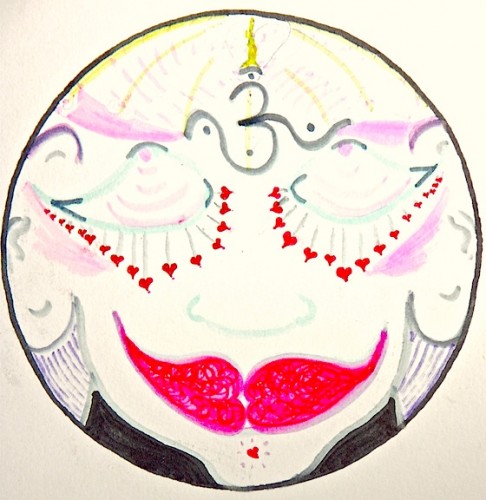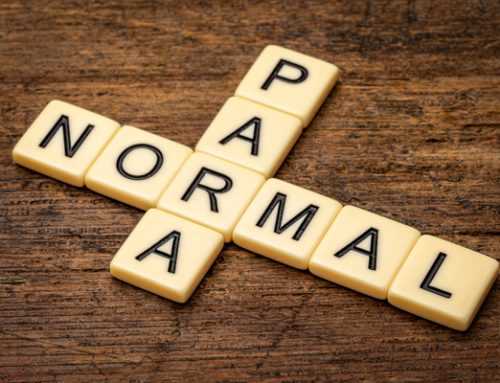Welcome to Today!
It will be as beautiful as you make it, I’m confident of that.
Today I’d like to take you another step forward in understanding the basics of brain~mind balance by discussing how the brain is programmed. We will expand on our discussion of archetypes from yesterday’s blog.
As I mentioned yesterday, archetypes are overarching ideas or principles, such as movement, earth, water, fire, air, space, victim, child, prostitute, warrior!
To recap, movement is an archetype because movement is an elemental principle that underlies anything that moves. “Horse” is an expression of the archetype animal, yet animals all move. Therefore, you can see in this one example how an archetype works as a unifying principle.
Humans are beings that all depend on the archetypes earth, water, fire, air and space for their existence, but not the opposite of that. So a human can’t be an archetype relative to the elemental archetypes because a human is an extension of these more primal or elemental archetypes. If we refer back to the victim, prostitute, child and warrior archetypes, we can see that trying to address another’s hostility, selfishness, self-sacrificial behavior or neediness as an entity in itself is highly unlikely to result in any long-term changes for the same reason that being frustrated that every time you pour a glass of beer it foams over the top is an expression of ignorance to the overarching theme of carbonation or gas accumulation.
THE EGO
The ego makes its first appearance on the scene of life once a child utters the words “I” or “No”. These words are linguistic indicators of boarder, barrier, self-definition or differentiation of self relative to other. When a child can’t speak, it uses body language and primal sounds to communicate it’s needs. This is important to understand because approximately 55% of all language is communicated via posture and gestures; deaf people communicate effectively through the use of signing.
Before the child has the capacity to understand the language used by parents and siblings, it learns to read body language. If you show an infant a scowling, mean looking face, it will often begin to cry immediately. If you smile and express love through your eyes, it is likely to respond by trying to touch or connect with you. The key point I want to share in this regard is that before language circuits are built in a child’s mind, it builds a library of signs related to gestures and postures. The child quickly learns that when mommy or daddy smiles it is safe and when mommy or daddy frowns or expresses anger, frustration or pain may be on the way! Research also shows that the average child (0-7) laughs about 450 times a day, yet, the average adult only laughs 4-5 times a day!
So, what happened to us along the way?
Self Awareness
I suspect all of you reading this have well developed skills for reading gesture. If you walk into a meeting and a bunch of scowling faces await, you are less likely to smile and more likely to brace yourself for what may appear as impending battle. So, what does it mean in your relationships then when you’ve encountered so many scowling people that you adopt a scowling face as a means of fitting in?
When we meet someone and they greet us with slouching “I’m defeated or poor me posture”, doesn’t it activate something deep inside us that says, “be warned, this person “isn’t happy”, “wants something”, or, “oh no, here we go again!?” Surely it does. This form of language goes far beyond the human realm as well. If you go visit a friend and their dog meets you at the gate with a scowling face and/or a defense posture, doesn’t it immediately change the way you feel inside with regard to your own sense of safety and security? Doesn’t it immediately change the way you choose to interact with the dog?
Surely it does and if it didn’t, you probably wouldn’t be here to read this blog by now!
In the late 80’s and early 90’s, I did a lot of work with the famous motivational speaker Anthony Robbins. One day while working with him at his house, he told me about a study he’d just read that was conducted in a hospital ward for the clinically depressed. The study required that each person use a rating scale, such as a 1 to 10 to indicate how depressed they felt. The subjects were then asked to smile for a given number of minutes, after which they were again asked to rate how depressed they felt. There was pretty much an across-the-board reduction in depression from smiling alone! I’ve used this knowledge many times with myself and others; when I catch myself in a funk, I simply tell myself to smile and I know that if my funk can’t withstand a smile, then it’s just my own silliness bubbling to the surface.
I also know that that same silliness will influence every animal, child and adult I come into contact with and it’s certainly not likely to stimulate joyful relationships either!
Our understanding of body language predates our understanding of spoken language quite significantly. The average child today begins uttering the words “I” and “no” between age two and three, yet, they have a significant understanding of body language that emerges as early as 2-3 months of age.
What this means is that by the time you begin learning and using spoken language, almost 100% of your life has been spent mastering body language, therefore, these neural circuits are far more developed than your spoken language circuits.
Another example of how deep and powerful this initial programming is can be seen when you greet someone who displays sad-sack body language and you say, “Hello! How are you today?” and they reply, “Just fine thanks.” Right away you know that’s BS. Right away you also may feel relieved they lied to you because if they’d told you the truth, you’d probably be stuck on the corner listening to their “poor me” story long enough that you may have to create a “poor me” me story of your own to give you an excuse for being late to your next appointment!
Youth or Aged, Your Choice!
The muscles of the face and eyes inform the entire body as to how to act. You will find that if you stand up and balance your weight between the balls of your feet and your heels for a moment and then smile, your extensors will fire and your bodyweight will move toward your heels and your head will become more upright. If you frown, your posture will move into pronation or into slouch-mode. If you only smile on the right side of your face, your weight will shift right and vice versa; the head leads the body.
People who look and act younger than their biological age often have a better sense of humor than most. They also have often developed better capacity to play in life. Because laughing and smiling activate our muscles of inhalation and extension, these actions become anti-gravity actions. They literally lighten our being.
To take our work of balancing brain and mind one step beyond looking honestly at your victim, prostitute, child and warrior tendencies, begin paying attention to how you communicate through gesture and facial expression. Ask a family member to use their phone to film you once in a while through out the day or simply take a photo of you intermittently throughout the day. At the end of the day, look at the film clips or photos and ask yourself honestly, would I want to be with that person for any length of time? If you answer this question honestly, it will probably give you a lot of insights into the nature of your relationships!
When we learn to love, laugh and have a sense of humor with and about ourselves, we are well on the way to reprogramming our brains with a new mindset that is much more conducive to healthy relationships with self and others. OSHO says, playfulness is a measure of intelligence. So remember that when you view your photos or video footage; take a flip through your photo albums if you don’t have someone with a camera to support this project. Notice how often you are faking your smile?
I also suggest buying a book of jokes and reading a joke or two every day so you can develop your sense of humor and learn to laugh again. Sharing your favorite jokes with people is a great way to offer others an opportunity to experience a concept shift. By consciously achieving states of joy and playfulness throughout your day, you will eventually achieve a state change. This means that with a little committed effort to being youthful, joyful, and having a sense of humor, you can learn to live in that state.
Then, the next time you walk into a meeting with a bunch of scowls, you can smile and inform them that you need their help because you’ve got this smile stuck on your face! Walk around the table to each person while holding your smile and look them in the eye and invite each of them to see if they can help you get it off!and you will most likely find that they can’t resist smiling because you are smiling. If you get good enough to smile while telling a joke, your whole room of scowlers will turn into giggling children who can’t wait to tell your joke to some other scowler. In no time, your smiles and your jokes can ripple out to the whole world!
In the next edition of this blog, I’ll share a little about how the linguistic structure influences or belief and behaviors.
In the mean time, what do you get when you combine a rooster with a telephone pole?
A 40-foot cock that wants to reach out and touch somebody!
Love and chi,
Paul Chek





